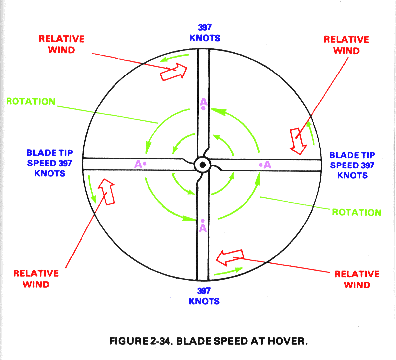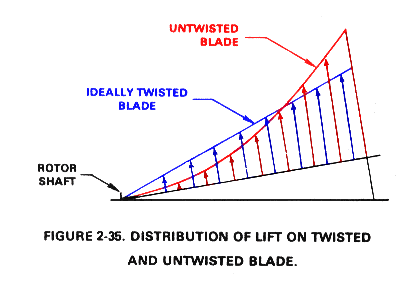

Blade speed near the main rotor shaft is much less because the distance traveled at the smaller radius is relatively small. At point "A", half way from the rotor shaft to the blade tip, the blade speed is only TBS knots which is one-half the tip speed. Speed at any point on the blades varies with the radius or distance from the center of the main rotor shaft. An extreme airspeed differential between the blade tip and root is the result. The lift differential between the blade root and tip is even larger because lift varies as the square of the speed. Therefore, when speed is doubled, lift is increased four times. This means that the lift at point "A" would be only one-fourth as much as lift at the blade tip (assuming the airfoil shape and angle of attack are the same at both points).
Because of the potential lift differential along the blade resulting primarily from speed variation, blades are designed with a twist. Blade twist provides a higher pitch angle at the root where speed is low and lower pitch angles nearer the tip where speed is higher. This design helps distribute the lift more evenly along the blade. It increases both the induced air velocity and the blade loading near the inboard section of the blade.
This picture compares the lift of a twisted and untwisted blade:

Note that the twisted blade generates more lift near the root and less lift at the tip than the untwisted blade.